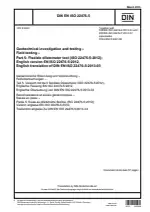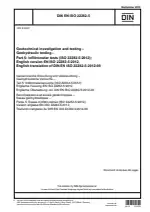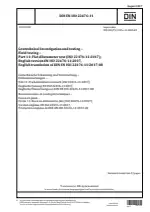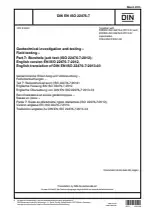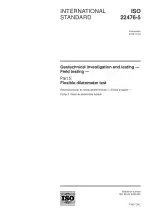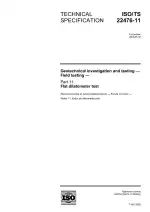Geotechnical Investigation and Testing - Field Testing - Part 5: Flexible Dilatometer Test
Also Known As:
The DIN EN ISO 22476-5 standard focuses on the use of the borehole jack test as a method for field testing in geotechnical investigation and testing. This standard is in accordance with EN 1997-1 and EN 1997-2, which are European standards for geotechnical design.
The main purpose of this standard is to outline the procedure for conducting a flexible dilatometer test in various types of soils and rock formations. The test can be carried out in natural soils, treated or untreated fills, and even in very hard soils, soft rocks, or hard rocks. Moreover, it can be performed both on land and offshore.
The flexible dilatometer test is used to measure the deformation and pressure characteristics of the soil or rock being tested. This information is crucial for assessing the engineering properties and stability of the ground in geotechnical projects. The standard provides guidelines and specifications for performing the test accurately and consistently, ensuring reliable results that can be used for design and analysis purposes.
| Descriptors | Civil engineering, Composition of the ground, Construction, Definitions, Descriptions, Designations, Dilatometers, Dynamic sounding rods, Earthworks, Exploration, Field investigations, Geotechnics, Group of soils, Investigations, Measuring instruments, Measuring probes, Mechanical testing, Penetrant flaw detection, Penetration depths, Penetration tests, Penetrometers, Properties, Site investigations, Soil mechanics, Soil sampling, Soil science, Soil surveys, Soils, Soundings, Structural engineering, Subsoil, Test equipment, Testing, Bottom, Ground, Floors, Reconnaissance |
| ICS Codes | 93.020 - Earthworks. Excavations. Foundation construction. Underground works |
| Language(s) | English |
| File Size | 1.3 MB |

